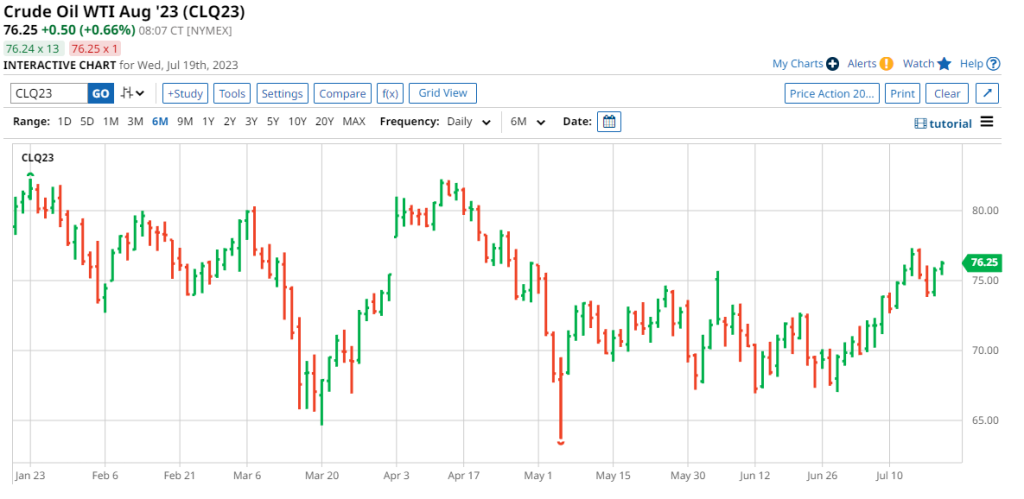U.S. stocks advanced on Tuesday, partly boosted by a round of solid bank earnings which helped put the Dow on track for its longest streak of daily gains in more than two years. The TSX also rose, propelled primarily by the energy and resource sectors, closing at a two-month high as a slowdown in Canadian inflation to less than 3% further bolstered investor sentiment.
Morgan Stanley shares jumped 6.45%, their biggest one-day percentage climb since Nov. 9, 2020 after topping expectations as growth in the bank’s wealth management business offset lower trading revenue.
Bank of America gained 4.42% after its profit beat expectations by earning more from customers’ loan payments, while investment banking and trading fared better than expected.
Shares of other banks also rose on Tuesday, with Bank of New York Mellon up 4.11%, and PNC Financial up 2.51%, after they reported quarterly results.
“They are surprising. This morning all the banks reported, all beat earnings expectations and all except PNC beat revenue expectations,” said Tim Ghriskey, senior portfolio strategist at Ingalls & Snyder in New York.
“I always hate to extrapolate the big bank earnings, which are always the first ones, to the rest of the market. We have a lot more coming here but earnings estimates have been brought down and banks are able to surprise.”
The Dow Jones Industrial Average rose 366.58 points, or 1.06%, to 34,951.93, the S&P 500 gained 32.19 points, or 0.71%, at 4,554.98 and the Nasdaq Composite added 108.69 points, or 0.76%, at 14,353.64.
The Dow registered its seventh-straight session of gains, its longest streak since March 2021, and closed at its highest level since April 2022.
Some of the largest U.S. banks such as JP Morgan last week cited a profit boost from higher rates and indicated the economy remained resilient.
The S&P 500 banks index ended 1.90% firmer at 317.02, its highest closing level since March 8, when the start of a mini-bank crisis created a sharp sell-off in the sector. The KBW regional banking index also climbed 4.10% to 96.25 , its highest close since March 21.
Charles Schwab jumped 12.57%, the best performer on the S&P 500, after the brokerage posted a smaller-than-expected drop in quarterly profit.
Technology, up 1.26%, was the best performing sector, as Microsoft shares gained 3.98 to a record close of $359.49 after announcing it would charge more to access new artificial intelligence features in its Office software.
Equities have rallied recently, with the S&P 500 and Nasdaq climbing to 15-month highs on data showing economic resilience, cooling inflation and a solid labor market.
Data released early on Tuesday showed retail sales rose less than expected in June on a decline in building materials and service station receipts, although consumers boosted or maintained their spending levels. In addition, production at domestic factories unexpectedly fell during the month, but rebounded in the second quarter as motor vehicle output accelerated.
UnitedHealth also bolstered the Dow as it climbed 3.29%, providing about 105 points to the upside, after Bernstein upgraded the health insurer to an “outperform” rating.
The Toronto Stock Exchange’s S&P/TSX composite index ended up 149.78 points, or 0.7%, at 20,376.57, its highest closing level since May 15.
Canada’s annual inflation rate dropped more than expected to a 27-month low of 2.8% in June, moving below the top of the Bank of Canada’s 1% to 3% control range for the first time since March 2021, helped by lower energy prices.
Energy rose 2.7% as oil settled 2.2% higher at $75.75 a barrel, while the materials group, which includes precious and base metals miners and fertilizer companies, added 1.9%. Financials advanced 0.8%.
Volume on U.S. exchanges was 10.54 billion shares, compared with the 10.58 billion average for the full session over the last 20 trading days. Advancing issues outnumbered decliners on the NYSE by a 2.76-to-1 ratio; on Nasdaq, a 1.62-to-1 ratio favored advancers. The S&P 500 posted 53 new 52-week highs and three new lows; the Nasdaq Composite recorded 157 new highs and 75 new lows.
Reuters, Globe staff



